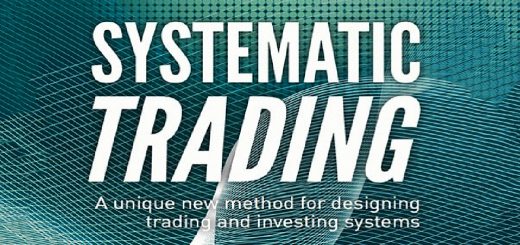Smart Portfolios 8 – Rebalancing

Today’s post is our eighth visit to Rob Carver’s book Smart Portfolios.
Rebalancing
The fourth and final part of Rob’s book is about rebalancing.
There are three reasons for rebalancing:
- periodic correction of portfolio drift
- a change in your target allocations
- changing volatilities or correlations
- since we are using very long-term values for these, we should not need to make changes very often, if at all
The fourth reason for rebalancing would be to overlay Rob’s return forecast rules (for momentum and yield) on to your passive portfolio allocation weights.
- I’ll be using a separate portfolio for active strategies, so this won’t apply to me.
With most things in investing, the technically ideal strategy often works out to be expensive, and you have to come up with a compromise approach.
- Rebalancing is no exception.
And as usual, the costs are known and the benefits are uncertain.
- Most people underestimate the costs and overestimate the benefits.
Cutting costs
Rob approaches the costs of rebalancing by looking at the annual portfolio turnover implied by various rebalancing strategies.
- Even a baseline level of rebalancing (to correct portfolio drift) implies 20% turnover (10% sold and re-bought).
To keep trading costs down, Rob offers two approaches.
The first is the no-trade zone.
- Here you simply ignore rebalancing until the gap between ideal and actual reaches a predetermined percentage.
Rob suggests a 2% buffer (1% in each direction away from ideal), but my instinct would be to use half of the minimum allocation size in the weighting plan.
- So if you have no assets that make up less than 2% of your plan, a 1% adjustment step would make sense.
Later on, Rob suggests that half of the average allocation is the best size.
- So with 50 assets, the average allocation would be 2% and the adjustment step would be 1%.
A third approach (which I actually use) is a minimum trade size.
- With a large portfolio, this is a more fine-grained approach (for example, my minimum trade size is 0.16% of my overall portfolio or 0.43% of my core passive portfolio.
Not also that rebalancing costs are lower (as an annual percentage) for larger portfolios, as larger trades are more efficient.
Rob suggests that annual rebalancing is enough for private investors.
- There’s some research to suggest that the optimum period is somewhere between eighteen months and four years (based on the interplay between momentum and mean reversion in the markets).
More diversifying funds
When a new (previously unavailable) fund appears, Rob compares the weight he would allocate to it to the no-trade zone and the minimum trade size.
- If the weighting is too small, it doesn’t get implemented.
He also provides a table for working out the breakeven level for switching to more diversified funds.
As before, Rob spreads the up-front costs over twenty years, which I think is optimistic.
- My own preference is just to work the substitutions into the annual rebalancing program.
Tax
Most UK investors should by now – more than 30 years after PEPs / ISA were introduced, and 13 years from the simplification of SIPPs – have a substantial proportion of their investments within tax shelters.
In addition, we have an annual CGT allowance of £12K (from April 2019) which means that even taxable accounts offer some protection.
- Average gains of 7% pa gross would support an account holding £170K
Dividends have a less favourable treatment.
- The annual £2K allowance would be used up by less than £60K of stocks with a typical dividend yield.
The UK has few “taper” laws in the investment arena, unlike the US.
Nevertheless, tax should only be a consideration for the largest investors.
Rob’s advice is to net off losses against gains and to add any tax to be paid into the calculations of whether substitutions are worthwhile.
- This will often mean than selling in a taxable account to fund contributions to a tax-sheltered account will not be worthwhile.
It’s important to keep the actively traded part of your portfolio – and volatile and/or high yielding equities = within a tax shelter.
- Less volatile assets (ETFs, bonds and cash) are better suited to taxable accounts.
You can also “mirror” holdings in shelters and taxable accounts, selling in the shelter on a gain and in the taxable account on a loss (which can then be offset against other gains).
Portfolio repair
The final chapter of Rob’s book is aimed at readers who have realised that their existing portfolio looks nothing like Rob’s recommendations, and that radical change is required.
He sets out the key steps in order of priority:
- Emergency diversification
- if you are overly concentrated in a few (UK) stocks
- Cut costs
- get rid of expensive active managers and expensive passive funds
- Get your asset allocation right
- Work out your regional and country allocation
- Work out your sector/bond style allocations
- Consider individual shares where appropriate
Of course, for all of these steps, the cost of changing needs to be compared to the benefits.
I would personally find steps 1 and 2 difficult to implement before I had worked out steps 3 to 5.
- But maybe that’s just me.
Rob uses the example of a portfolio he set up for his mother, then neglected and later had to fix.
Conclusions
And that’s it – we’ve finished Rob’s book.
- Although it’s been pretty hard going, I’ve probably enjoyed it more than any other UK investing book (Idle Investor comes close).
It’s made me think hard about my asset allocations and has led to the recently-published series of posts about “The Perfect Portfolio”.
- I have some more thoughts on Rebalancing here, and on Tax here.
I’ll be back in a couple of weeks with a monster post pulling together all of the lessons from Rob’s book.
- And after that, I’ll move on to Rob’s other book – Systematic Trading.
Until next time.















